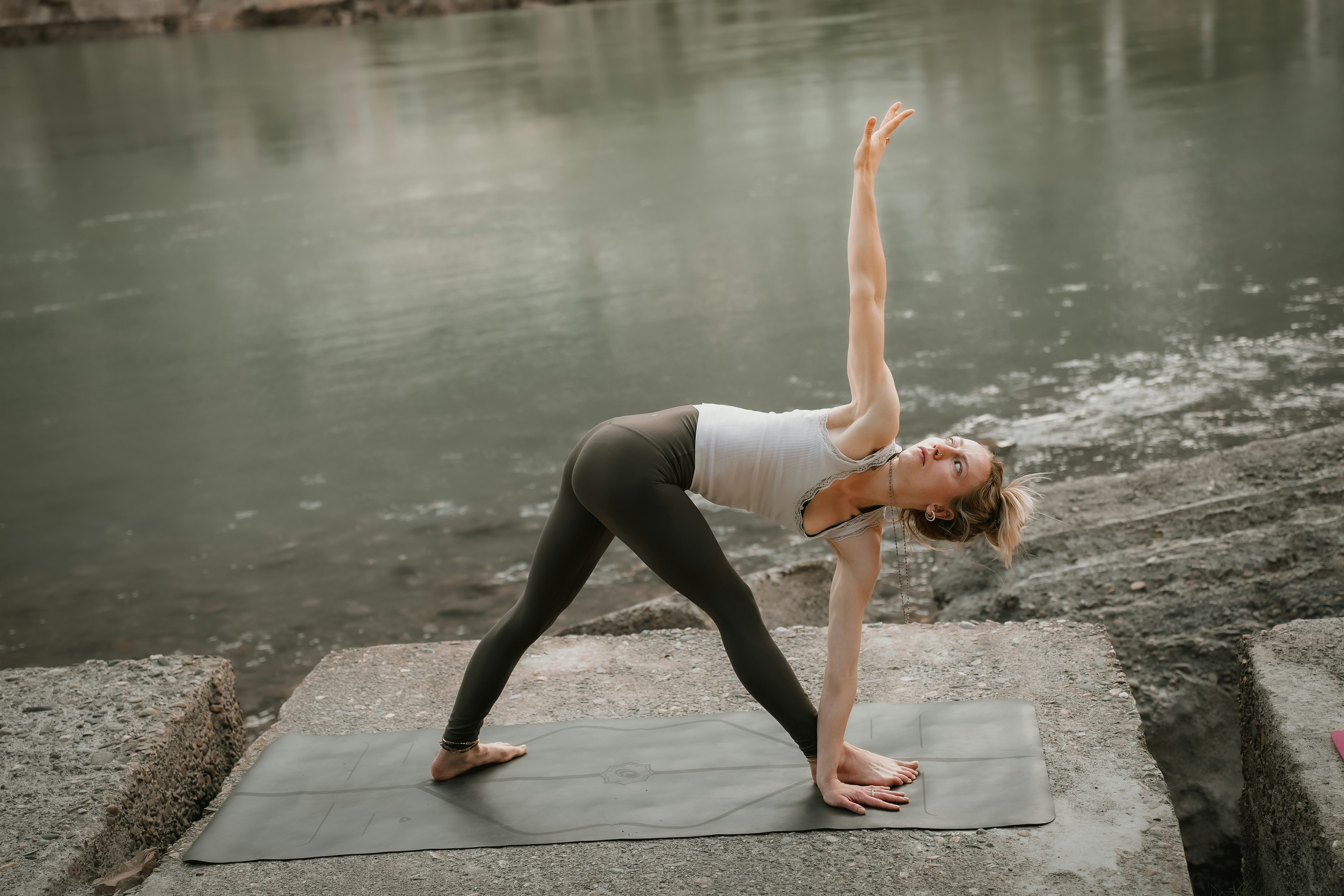Introduction to Lizard Pose
Lizard Pose, known in Sanskrit as Utthan Pristhasana, is a foundational pose in various yoga practices that emphasizes flexibility and strength. As practitioners advance in their yoga journey, the mastery of Lizard Pose becomes essential for developing hip flexibility and core strength. Typically performed in a sequence or as a standalone pose, Lizard Pose invites the body into a low lunge position that provides deep stretching and engagement of multiple muscle groups.
To practice Lizard Pose, one begins in a Downward-Facing Dog. From this position, one steps their right foot forward to the outside of the right hand. The left leg extends back, with the knee either hovering off the ground or resting on the mat. The alignment plays a crucial role in ensuring the benefits of this pose are maximized. The right knee should align roughly over the right ankle while the left leg remains straight. It is crucial to keep the hips low and square to the ground, which fosters a greater stretch in the hip flexors and quadriceps.
The significance of Lizard Pose spans both physical and mental facets of yoga. Physically, this pose enhances flexibility in the hips, hamstrings, and lower back. It prepares practitioners for deeper backbends and forward folds by loosening the tightness that often resides in the hip area. Mentally, Lizard Pose encourages practitioners to find stillness and focus, fostering a deeper connection between the mind and body. Historically, Lizard Pose is often associated with the earth element in yoga, symbolizing grounding and stability. As one engages with this pose, they not only cultivate physical strength but also develop resilience and balance in their practice. Understanding these foundational elements of Lizard Pose sets the stage for exploring its myriad benefits in more depth.
Physical Benefits of Lizard Pose
Lizard Pose, known in Sanskrit as Utthan Pristhasana, is a yoga asana that offers a multitude of physical benefits when practiced regularly. One of the most notable advantages is its ability to enhance flexibility in the hips and groin. This area of the body tends to be tight for many individuals, especially those who spend extended periods seated. Practicing Lizard Pose allows for a deep stretch that opens up the hip flexors, promoting improved range of motion and reducing the risk of injuries during physical activities.
Moreover, this pose actively strengthens the lower body. As one transitions into Lizard Pose, the legs are engaged, which helps build muscle endurance in the quadriceps, hamstrings, and calves. This strengthening effect is vital for daily activities, athletic performance, and overall functional strength. Regularly incorporating Lizard Pose into your routine may lead to increased power and stability in movements, such as walking, running, or engaging in various sports.
Additionally, Lizard Pose serves as an excellent stretch for not only the quadriceps and hamstrings but also the muscles surrounding the lower back and core. This comprehensive stretching can alleviate tension and tightness, improving overall comfort during movement. Enhanced flexibility and strength in these areas can contribute to better balance and coordination, which are essential for maintaining physical health and mobility as one ages.
Lastly, the combination of these benefits fosters greater body awareness. By focusing on breathing and alignment during Lizard Pose, practitioners learn to connect movement with intention, which is crucial for developing skills needed in more advanced yoga postures and physical activities. Overall, Lizard Pose is a powerful addition to any yoga practice, greatly aiding in the pursuit of optimal physical wellness.
Mental and Emotional Benefits of Lizard Pose
Lizard Pose, or Utthan Pristhasana, extends beyond its physical advantages; it also offers several mental and emotional benefits that can significantly enhance overall well-being. Engaging in this asana encourages practitioners to establish a deeper connection with their body and mind. This awareness promotes mindfulness, leading to a greater understanding of one’s thoughts and feelings during practice.
As individuals hold the Lizard Pose, they are often encouraged to focus on their breath. This intentional breathing mechanism not only facilitates the physical stretch but also serves as a tool for relaxation. By concentrating on inhalations and exhalations, practitioners can experience a reduction in stress levels, as the mind is drawn away from daily distractions and pressures. The calming effects of deep breathing can elevate mood and diminish feelings of anxiety during and after each session.
The consistent practice of Lizard Pose can also nurture emotional resilience. As individuals confront their boundaries in flexibility and strength, they may discover a sense of achievement that positively impacts their self-esteem and confidence. Such accomplishments encourage a mindset that embraces challenges, fostering emotional stability. Moreover, this pose frequently facilitates the release of stored tension within the hips, an area often linked to stress and emotional blockages.
Incorporating Lizard Pose into a daily routine can yield lasting benefits for mental clarity and emotional balance. Practitioners may find their focus sharpening, establishing a clearer perspective on personal and professional goals. By taking the time to move deeper into themselves through this lively practice, many individuals ultimately report a greater sense of life satisfaction and well-rounded wellness. Regular engagement with this pose not only strengthens the body but also cultivates a healthy mind, paving the way for a more harmonious existence.
Tips for Practicing Lizard Pose Safely
Practicing Lizard Pose can greatly enhance flexibility, particularly in the hips and hamstrings, while building strength in the legs and core. However, to gain the maximum benefits safely, consider the following key tips.
First and foremost, it is crucial to listen to your body throughout the practice. If you are a beginner or have tight hips, you may find that traditional Lizard Pose is challenging. Modifications can be beneficial in such cases. A common adjustment involves placing your forearms on a block or the ground, allowing for a gentler descent into the pose. This variation helps ease tension while still providing the stretch needed to develop flexibility over time.
Additionally, ensuring proper alignment is vital to avoid strain or injury. As you move into Lizard Pose, be mindful of your knee alignment. The front knee should track over the ankle, preventing it from collapsing inward. Maintaining a neutral spine is equally essential; avoid rounding your back as you hold the pose. Common mistakes, such as pushing too deeply into the pose or neglecting breath, may lead to discomfort. To prevent this, remember to engage your breath and maintain mindfulness of your body’s limits.
As you advance, consider integrating Lizard Pose into your broader yoga practice systematically. Incorporating it before or after deeper poses can help your body prepare and recover. Gradually increasing the duration and depth of your practice will allow you to build strength progressively. Always allow your body ample time to adjust to the demands of the pose, ensuring a sustainable practice.
In conclusion, by following these tips and listening to your body, you can safely enjoy the numerous benefits of Lizard Pose, enhancing your overall yoga experience.
Credit image: https://images.squarespace-cdn.com/content/v1/5008a3c6c4aa6450352d2303/1410801201172-R30W0TVDARVBWLTD2L4D/image-asset.jpeg




Leave a Reply